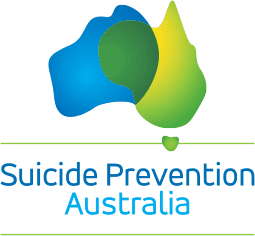Australian Treatment Outcomes Profile ATOP
Australian Treatment Outcomes Profile ATOP overview
Creator and Context
The Australian Treatment Outcomes Profile (ATOP) is a concise and effective tool designed to evaluate the impact of substance use treatment on individuals. It is a 22-item instrument focusing on assessing various parameters of substance use and general health and wellbeing over the preceding four weeks.
Developed in Australia, ATOP was designed with the intention to provide a standardised method for monitoring treatment outcomes in substance use. The assessment tool was created to capture the multifaceted nature of substance abuse treatment outcomes, recognising the importance of both substance use and overall wellbeing. It is a patient reported outcome measure (PROM) and clinical risk screening tool, eliciting responses directly from clients and is designed to be incorporated into routine clinical care in Alcohol and other Drug (AoD) treatment settings.
Presenting Conditions
ATOP is specifically tailored to measure and evaluate:
The extent and frequency of substance use.
Health-related issues influenced by substance use.
Mental and emotional wellbeing related to substance use.
Administration
ATOP is administered through a structured interview format, which can be conducted in-person or via telehealth platforms. The clinician guides the patient through each item, ensuring clarity and accuracy in responses.
Desired Audience
This tool is primarily used with adults undergoing treatment for substance use disorders, including those in outpatient and inpatient settings.
Clinicians should use ATOP to track progress over the course of treatment, comparing results at different intervals. This comparison aids in identifying areas of improvement and aspects needing further intervention.
Considerations
When using ATOP, consider cultural and individual differences in responses. Ensure confidentiality and create a non-judgmental environment to encourage honest responses.
How to score the Australian Treatment Outcomes Profile ATOP
Conducting the assessment
Respondents should be encouraged to reflect on their experiences over the past four weeks. Responses should be as accurate as possible to ensure effective evaluation and planning.
Interpretation
Use of a range of substances: alcohol, cannabis, benzodiazepines (prescribed and non-medical use), heroin, opioids (prescribed and non- medical use, excluding prescribed methadone and buprenorphine), amphetamine type substances (including methamphetamine and MDMA), cocaine and tobacco. It also includes the capacity to record up to two other substances reported by clients. Substance use information is captured using a modified Timeline Follow Back (TLFB; Fals-Stewart, O'Farrell et al. 2000) approach – enquiring about number of days each substance was used in 4 weekly (7-day) intervals, tallying to provide an estimate of the number of days used in the past 28 days. ‘Average’ quantity of use for each substance class is also captured, although only alcohol has a standardised unit (standard drinks) that allows for comparisons between individuals.
Section 2 gathers information about indicators of a person’s health and wellbeing, and a range of clinical risk factors in the past 28 days. Domains include number of days paid work and study; whether the participant has been homeless or at risk of eviction; caring for or living with children; a victim or perpetrator of violence (including domestic violence); and whether they have been arrested. Respondents are also asked to rate their psychological health, physical health and quality of life on a 0 (poor) to 10 (good) scale. This subsection of Psychological, Physical and Quality of Life self-ratings is referred to as the PPQ in this Manual.
Clinical Considerations
Each item in ATOP is scored based on frequency and severity, with higher scores indicating greater severity or frequency of issues. The cumulative score provides an overview of the individual's condition and progress.
Australian Treatment Outcomes Profile ATOP use cases
Evaluating the effectiveness of a treatment program.
Identifying relapse or areas of risk.
Informing adjustments to treatment plans based on individual progress.
Category
Drug & Alcohol
Research Summary
Lintzeris, N., Mammen, K., Holmes, J., Deacon, R., Mills, L., Black, E., Gardner, L., and Dunlop, A. (2020). The Australian Treatment Outcomes Profile (ATOP) Manual.
Other Assessment Guides
Alcohol Use Disorders Identification Test AUDIT
Explore the Alcohol Use Disorders Identification Test (AUDIT) in our comprehensive guide. Learn about its development, application in identifying alcohol-related issues, scoring interpretation, and clinical utility. Essential for healthcare professionals focused on early detection and intervention in alcohol misuse.
CAGE Alcohol Questionnaire
Learn about the CAGE Alcohol Questionnaire, a concise tool for identifying potential alcohol abuse and dependence. This guide covers its methodology, application, scoring, and clinical relevance, making it a valuable resource for healthcare professionals in diverse settings.
Drug Use Disorders Identification Test DUDIT
Uncover insights on the Drug Use Disorders Identification Test (DUDIT) with our comprehensive guide. Learn about its purpose, administration, scoring, and relevance in identifying drug use disorders, making it an essential tool for healthcare professionals and researchers.










